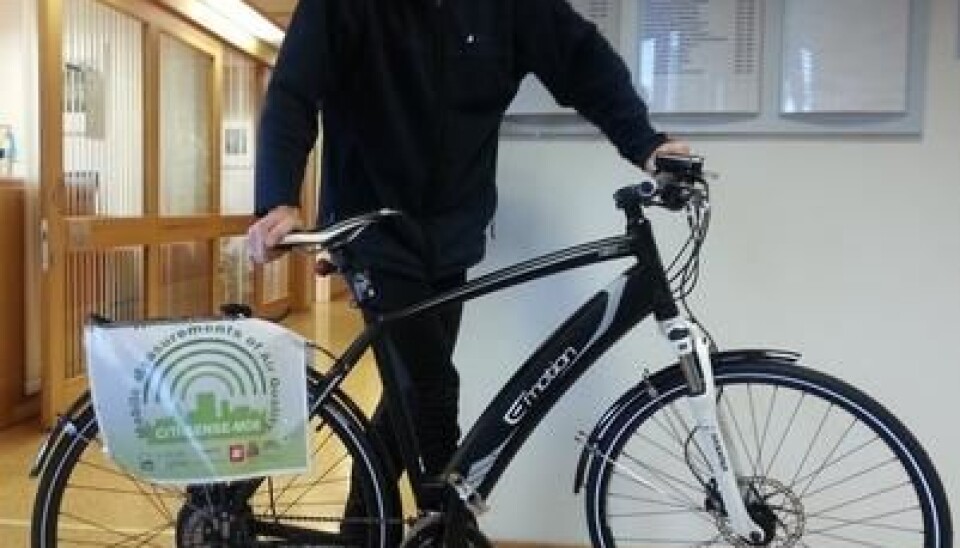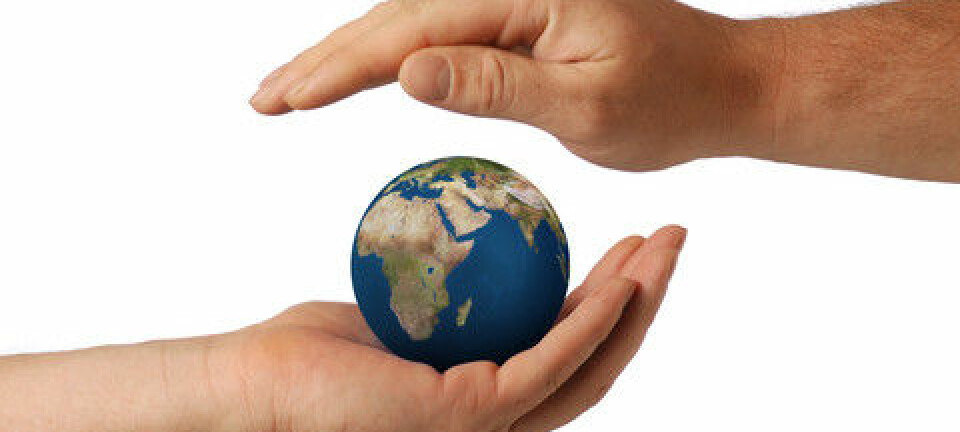An article from Norwegian SciTech News at SINTEF

You and I will monitor the environment
Environmental information about CO2, airborne dust and pollen will no longer be collected only at isolated measuring stations. From now on, cyclists, bus drivers and the man in the street will be able to do their bit.
Denne artikkelen er over ti år gammel og kan inneholde utdatert informasjon.
At present, environmental measurements are made using expensive stations spread around the country.
“However, now that everybody has a mobile phone, and with the development of technology, we ourselves can contribute with various types of data,” says Arne Berre at SINTEF ICT.
More and better information is particularly valuable on days of high pollution or high pollen counts.
“Making their own measurements will get the general public involved in their own environment. Everybody can now receive useful feedback about the conditions around us.”
Technology will be developed by way of the EU projects Citi-Sense and Citi-Sense-MOB. These will enable ordinary people to collect environmental data. Research scientists from the Norwegian Institute for Air Research (NILU) and SINTEF are already well under way with the Norwegian contribution.
Sensors aboard buses
The scientists are now having discussions with Oslo Municipality about fitting buses with sensors to measure air quality along the roads.
“The bus drivers themselves will also find this information useful as they will see how acceleration and driving style affects the results and can learn to drive in a more ecologically friendly way,” says Berre.
Magne Elvik, Operations Manager at Nobina Oslo Vest, confirms that sensors will be tested aboard two gas-powered buses at the beginning of April on routes around Grorud, Sinsen and Oslo Central Station, as well as out to Fornebu. If the tests go according to plan, a further eight buses will be included in the experiment.
On streetlamps and electric bikes
Last year was mostly dedicated to testing new technology and getting everything to function so that data could be obtained for later use. The actual measurements will take place in the coming months.
Nuria Castell at NILU says that a total of 40 static sensors will be deployed in Oslo.
“We will fit sensors to streetlamps, for example, to cover city centre areas where pollution is high, and will also monitor neighbourhoods adjacent to Ring Roads 2 and 3, and at Bygdøy”, she says.
Twenty portable sensors will be issued to volunteers in the city and to employees such as traffic wardens who are exposed to urban pollution at work. The citizens of Oslo will also be able to measure air quality when cycling, and at least one sensor will be fitted to an electric bike.
“We are starting this spring with two buses, a bicycle and five fixed sensors. By the end of the summer we aim to have full distribution involving more buses, and in the autumn all the fixed sensors will be installed, as well as those carried by people. Measurements will then be carried out in the city throughout 2015,” Castell confirms.
Lapel buttons
In December, SINTEF tested hand-held units for collecting weather and wind data as well as a small lapel button for measuring UV radiation.
“We have now sent the equipment to Bilbao for large-scale testing,” says Arne Berre.
This is because around thirty partners in Europe are busy with measurements and tests. Among other things, they will provide both indoor and outdoor measurements of CO2 levels in schools. With such a large amount of data, the EU will be able to make comparisons and obtain a basis for developing joint solutions as well as for sharing technology.
The next step will deal with how to successfully involve people in future by means of user participation and work groups. The plan is to test the technology with selected individuals in 2014 and then make it more generally available during 2015.
-----------------
Read the Norwegian version of this article at forskning.no

































